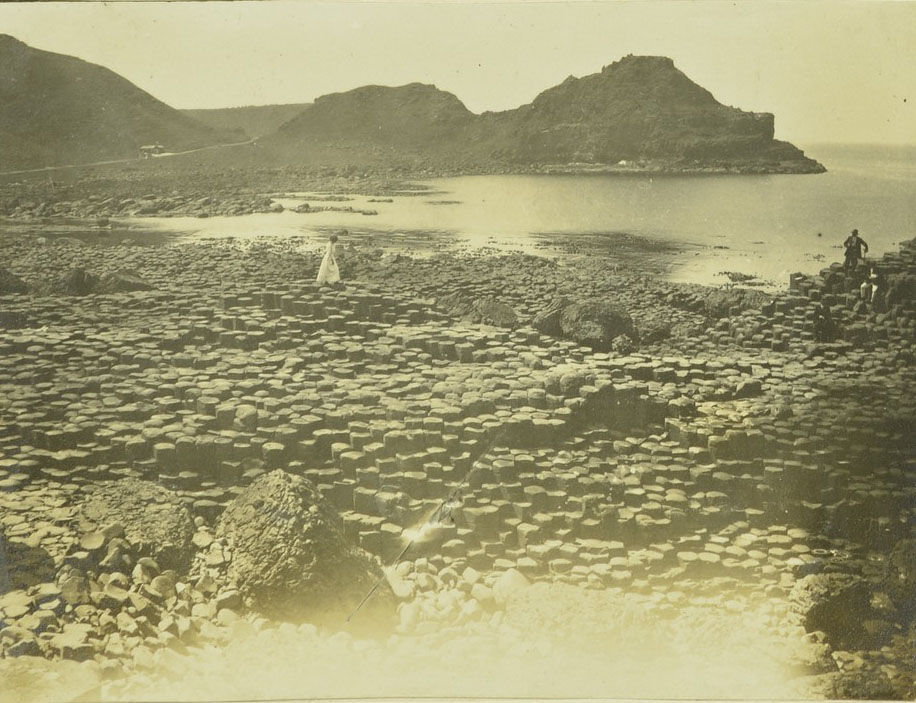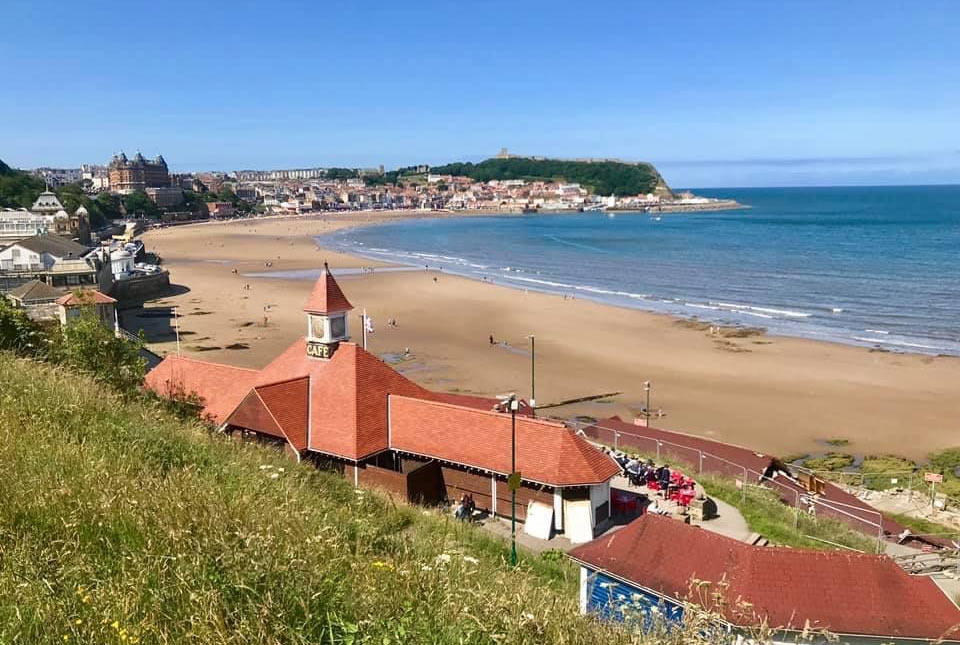The Giant’s Causeway and Causeway Coast form Northern Ireland’s only UNESCO World Heritage Site (WHS), one of only two such sites in the UK inscribed because of their geological heritage.

The Giant’s Causeway and Causeway Coast, Northern Ireland. Source: Dimitry Anikin / Unsplash
The Giant’s Causeway is made up of over 40 000 columns of basalt and, together with the wider Causeway Coast, tells the story of the sequence of events at the start of the Palaeogene period, some 60 million years ago.
During that time, the ancient continent of Laurasia began to fragment, causing the opening of the North Atlantic Ocean. The resulting cataclysmic volcanic activity along this zone of crustal weakness formed the rocks of the WHS, as well as those on adjacent parts of western Scotland. Lava poured out onto the existing landscape, extending from the volcanoes and fissures that littered the area and covering the entire land surface.

The columnar jointing seen in basalt on the Isle of Staffa in Scotland originated from the same volcanic episodes that created the Giant’s Causeway. Similar formations are also found on the isles of Mull and Ulva. BGS © UKRI.
The first lavas to erupt came from at least six eruptions, followed by a long quiescent period during which all volcanic activity ceased. This hiatus led to heavy weathering of the topmost layer of lava, leading to a series of chemical changes producing the thick iron- and aluminium-rich, red layer known as the Interbasaltic Formation. During this long dormant period, the surface of the lava developed into a richly forested landscape of low hills and deep, wide valleys.
Volcanic activity resumed suddenly and dramatically, with lava initially draining into the valleys: at the Causeway, it accumulated as a large lava lake some 90 m deep. This body of lava cooled slowly and evenly, developing regular stress patterns as it solidified, which caused contraction cracks that permeated the entire mass and created thousands of columns.

Columnar jointing is created by slow, even cooling of a lava flow. Source: fsHH / Pixabay
Following this, there was another long period of dormancy that was succeeded by the final, gigantic series of eruptions (Upper Basalt Formation), with the pipes and fissures supplying these last flows passing through the earlier rocks on their way to the surface.
Whilst most people come to the Giant’s Causeway to see the impressive columnar basalts, in order to the gain a full appreciation of why the site has been inscribed on the World Heritage List, the full name of ‘The Giant’s Causeway and Causeway Coast World Heritage Site’ is ultimately more useful. Of course, some say it was built by a giant called Fionn mac Cumhaill, or Finn McCool, but violent volcanic eruptions are much more exciting!
The Giant’s Causeway has attracted visitors for over 300 years, all of whom come to see the enigmatic basalt columns and the surrounding landscape. It is now one of the most popular tourist attractions in Northern Ireland and, prior to the COVID-19 pandemic, attracted over one million visitors from all around the world to see this special place every year.

The Giant’s Causeway has been attracting visitors for hundreds of years. This black-and-white picture was taken in the 1930s. BGS © UKRI.

A more modern view of visitors at the causeway. Source: Gregory Hayes / Unsplash
About the author

Dr Kirstin Lemon
GSNI Information and Infrastructure team leader
Relative topics
You may also be interested in

Discovering Geology
Discovering Geology introduces a range of geoscience topics to school-age students and learners of all ages.

Maps and resources
Download and print free educational resources.

Postcard geology
Find out more about sites of geological interest around the UK, as described by BGS staff.



